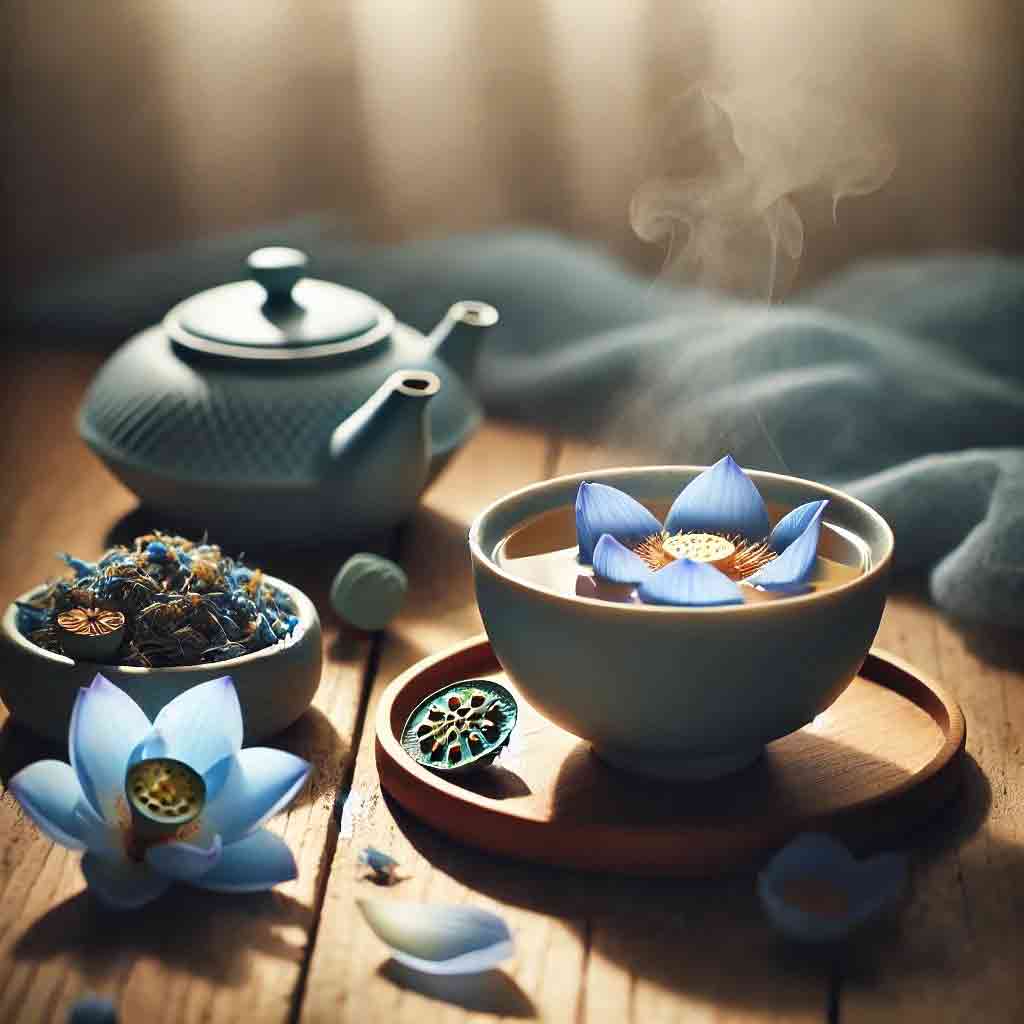Blue Lotus Tea, derived from the sacred blue lily (Nymphaea caerulea), has captivated herbal enthusiasts, wellness seekers, and tea lovers worldwide. While its historical significance in ancient Egyptian culture is well documented, its flavor profile remains an intriguing subject. This article provides an in-depth look at what Blue Lotus Tea tastes like, its aroma, mouthfeel, and how its subtle notes can vary depending on preparation.
Understanding the Origins of Blue Lotus Tea
The Blue Lotus flower, native to the Nile River and parts of Asia, was revered in spiritual and ceremonial contexts. Today, it is brewed into tea, often consumed for relaxation and meditative purposes. To truly appreciate its flavor, it helps to understand its roots: a plant linked with both mysticism and healing traditions.
The First Sip: Initial Flavor Profile
When brewed correctly, Blue Lotus Tea greets the palate with a mild floral sweetness, akin to chamomile but with deeper earthy undertones. Unlike stronger herbal teas such as peppermint or ginger, Blue Lotus offers a gentle, understated flavor that develops subtly with each sip.
-
Primary Taste Notes: Soft floral, slightly sweet, delicately herbal
-
Underlying Nuances: Earthy, grassy hints with a faint bitterness
-
Comparison: Similar to green tea crossed with chamomile, yet smoother
Aromatic Characteristics of Blue Lotus Tea
The aroma of Blue Lotus Tea plays a significant role in shaping its perceived taste. Upon brewing, the steam carries a sweet, floral fragrance with whispers of spice and honey. This aromatic complexity enhances the overall tea-drinking experience:
-
Nose Profile: Floral bloom, honeyed sweetness, faint spice
-
Lingering Effect: A calming scent that prepares the mind for relaxation
The Mouthfeel: Texture and Sensation
Blue Lotus Tea offers a silky and light-bodied texture, making it easy to sip without overwhelming the senses. Unlike heavy black teas or tannin-rich blends, it leaves behind a smooth, almost velvety finish.
-
Initial Sip: Gentle and clean
-
Aftertaste: Mildly bitter with subtle sweetness
-
Overall Sensation: Relaxing, soothing, and well-balanced
Does Blue Lotus Tea Taste Bitter?
Bitterness in Blue Lotus Tea depends largely on brewing technique. Over-steeping the petals can intensify bitter notes, overshadowing its delicate sweetness. A short brew of 5–7 minutes generally results in a harmonious balance between floral and earthy tones.
-
Light Brew: Sweet, floral, and refreshing
-
Strong Brew: More bitter, earthy, and grounding
Comparisons with Other Herbal Teas
To understand what Blue Lotus Tea tastes like, it helps to compare it with more familiar infusions:
-
Chamomile Tea: Similar floral sweetness, but Blue Lotus is earthier
-
Lavender Tea: Comparable floral notes, though Blue Lotus is less pungent
-
Green Tea: Both share earthy bitterness, but Blue Lotus is smoother
-
Hibiscus Tea: Hibiscus is tart and tangy, while Blue Lotus is mellow and calming
Flavor Enhancements: Pairing and Additions
Though enjoyable on its own, Blue Lotus Tea can be enhanced with natural additions that complement its flavor:
-
Honey: Accentuates natural sweetness
-
Lemon: Adds a bright citrus twist
-
Mint Leaves: Provides refreshing contrast
-
Cinnamon or Cardamom: Introduces a spiced warmth
Experimenting with pairings allows drinkers to customize the tea’s taste profile without masking its unique qualities.
Cultural and Ritual Influence on Flavor Perception
In many cultures, flavor is not just about the tongue but about the mindset and ritual surrounding the drink. Blue Lotus Tea, historically linked to Egyptian spiritual ceremonies, carries an aura of calmness and transcendence that enhances its taste perception. The gentle floral notes may seem sweeter when consumed during meditation or relaxation.
Why the Taste of Blue Lotus Tea Appeals to Many
The unobtrusive flavor profile of Blue Lotus Tea makes it versatile and appealing to a wide range of palates:
-
For Beginners: Mild flavor ideal for those new to herbal teas
-
For Tea Enthusiasts: Offers a unique floral-earthy balance not found in mainstream blends
-
For Wellness Seekers: Its calming taste aligns with its soothing properties
Brewing Methods and Their Impact on Taste
The method of brewing significantly alters the tea’s flavor profile:
Hot Brew
-
Produces a smooth, floral-forward taste with subtle earthy undertones.
-
Ideal for relaxation rituals.
Cold Brew
-
Creates a lighter, crisper flavor with reduced bitterness.
-
Refreshing during warmer weather.
Concentrated Infusion
-
Stronger, more earthy, and slightly bitter profile.
-
Often used for ceremonial or meditative practices.
Key Takeaways: What Blue Lotus Tea Tastes Like
-
Primary Flavor: Mild floral sweetness with earthy notes
-
Aroma: Honeyed and calming, floral with hints of spice
-
Texture: Light, smooth, and velvety
-
Aftertaste: Gentle bitterness with lingering sweetness
-
Versatility: Pairs well with honey, lemon, and spices
Conclusion
So, what does Blue Lotus Tea taste like? It is a harmonious blend of subtle floral sweetness, delicate earthiness, and smooth texture, making it both unique and universally approachable. Its aroma enhances the calming experience, while its mild profile ensures it can be enjoyed plain or enhanced with natural ingredients. Whether sipped in quiet reflection or as part of a daily wellness ritual, Blue Lotus Tea delivers an elegant and soothing taste journey unlike any other herbal infusion.

